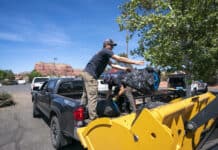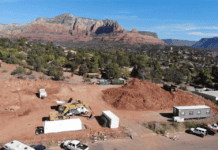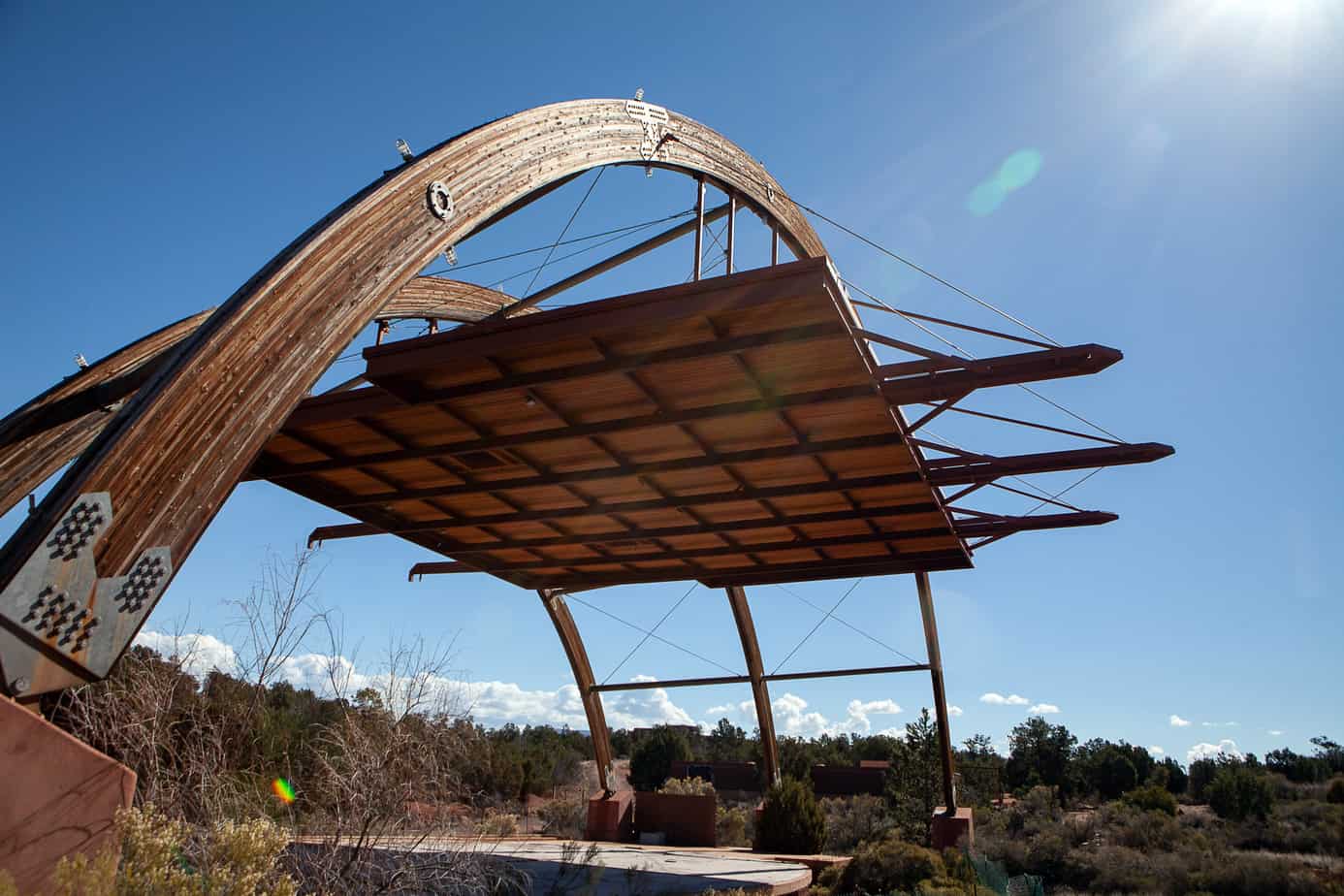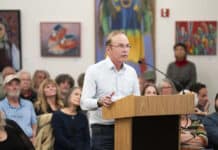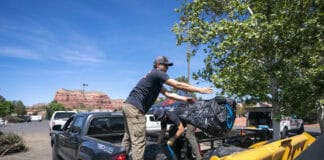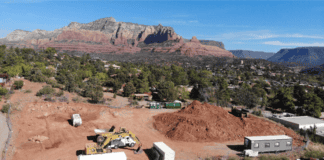Editor’s Note:
After this editorial was published, the Sedona Cultural Park’s architects, Dan Jensvold and Stephen Thompson, inspected the Frontiere Pavilion on Jan. 12 and found no signs of significant deterioration of the structure in spite of 20 years of neglect. Restoring the Frontiere Pavilion and the Sedona Cultural Park to a condition in which the park could host a major music festival would cost between $3 million and $5 million, Jensvold estimated. As for the stage itself, which is showing some wear, “just put inch and an eighth plywood on top of it. The framers could do that in two days,” he said.
“This amphitheater was designed for 50-plus years of use, but the more likely scenario is that it lasts 75-plus years with minimal effort,” said Hazen Hyland, vice president of Western Wood Structures, the company that engineered and built the Frontiere Pavilion. Click to read the whole story.
The editorial:
One of the longest sagas in Sedona’s modern history is the use, abandonment and dereliction of the Sedona Cultural Park, located on the far western edge of city limits.
The park was proposed in the late 1990s with land acquired in 1998. The 5,500-seat amphitheater opened in 2000 and hosted some big names, including Norah Jones, Willie Nelson and the late B.B. King. Jones, in particular, was a coup because she signed contracts to perform shortly before she won five Grammys and her fees skyrocketed.

J. Kat Woronowicz/Larson Newspapers
While more recent residents may assume the park closed due to actions by the Sedona City Council, complaints about noise from neighbors or opposition from residents — the “big three” reasons lots of other programs, developments and projects struggle and ultimately fail in Sedona — none of these are true in regards to the Sedona Cultural Park.
No, the park’s failure was mixture of economics and poor administrative planning.
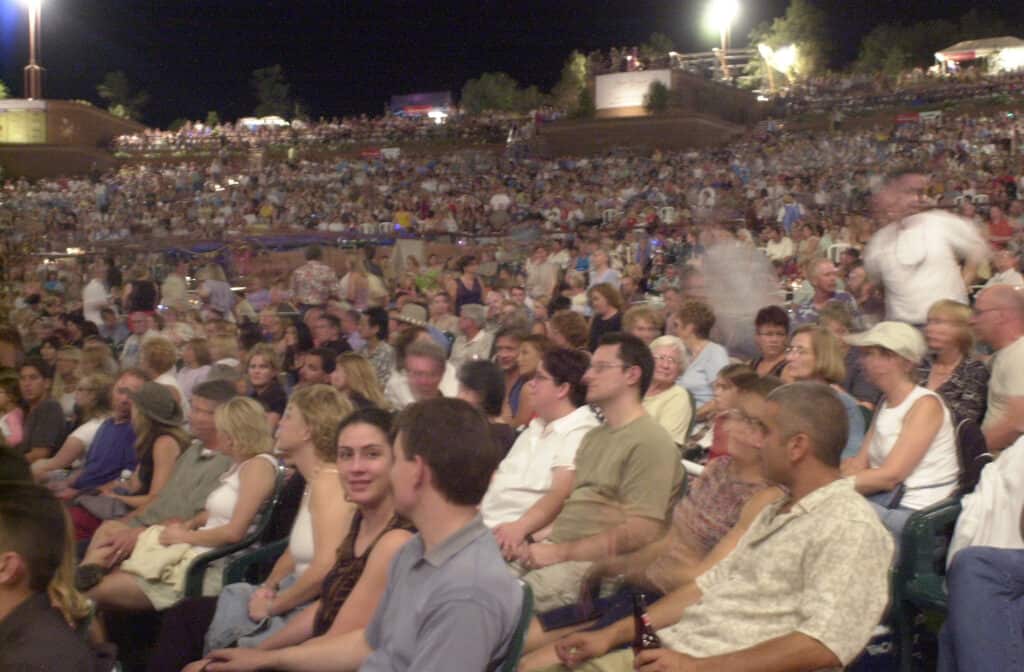
File photo/Larson Newspapers
One factor that the park could have overcome was that many of the acts were booked without an exclusivity clause. Such a clause would mean that, if a venue books an artist for a gig, they couldn’t perform within a certain mileage radius within a certain time frame, e.g., if Lady Gaga performs at the Orpheum Theatre in Flagstaff and has a 200-mile exclusivity contract for 20 days, she couldn’t perform at most venues in Phoenix, but could play a show at the Rialto Theatre in Tucson or come back in 21 days and perform at the 20,000-seat Ak-Chin Pavilion in Glendale.
Without this clause, acts performed in Sedona then played the next night in Phoenix, meaning many of those Phoenician concertgoers who might have come up to Sedona for the show just waited a day and went to a concert a few miles from where they lived.
Outdoor amphitheaters also suffer limited performance dates, as we’ve seen with the Posse Grounds pavilion. Winter is too cold, summer is too hot and shows could be canceled or suffer limited attendance if a major monsoon rainstorm rolls in between June and September. The upside is that pavilion is owned by the city and backed by public funds.
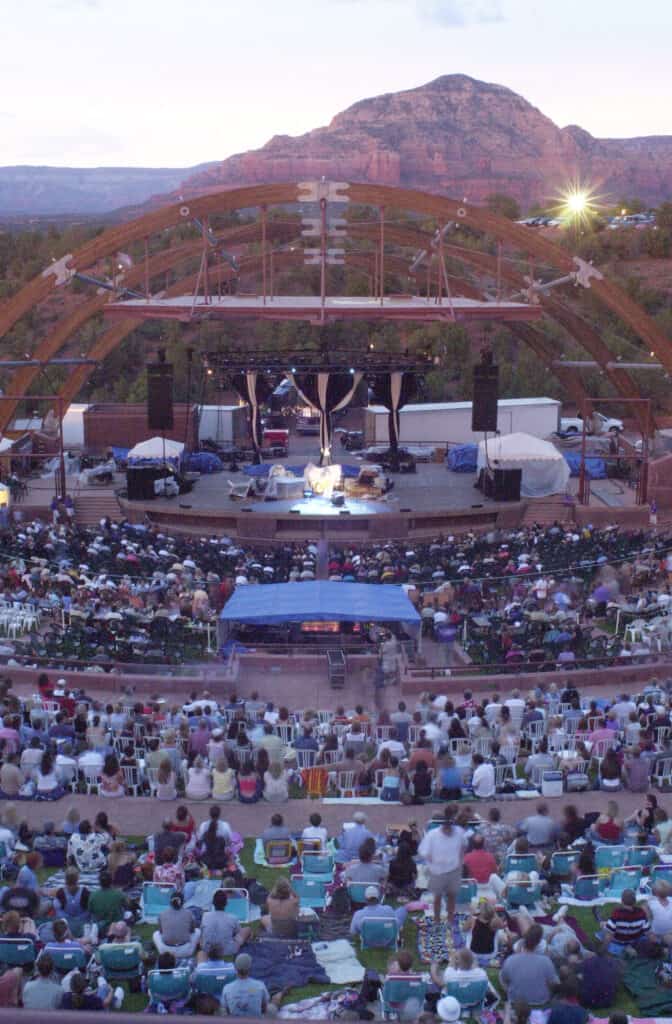
File photo/Larson Newspapers
The Sedona Cultural Park was never owned by the city, so it had no such financial backing. Limited funds meant the park could not book acts weekend after weekend, so it sat idle for long stretches, not making any funds to pay back the construction loan.
The bigger factor was economics. Nationally, ticket sales for concerts were down in the early 2000s — the entertainment industry suffered a lull in attendance for years after 9/11 — although the Sedona Cultural Park had seen an general uptick in attendance from 40,000 in 2002 to 60,000 in 2003. The Sedona Cultural Park was a costly project and, although it got lots of help from local donors and ticket sales, it was forever in debt. By summer 2003, the nonprofit that operated the park still owed $3.8 million to the National Bank of Arizona.
Coupled with the cost of booking acts and running the venue, the park was still falling short of paying back the loan.
With a major balloon payment coming due in summer 2004 that the nonprofit would be unable to pay, the park closed in September 2003, canceled the final shows in October and eventually filed for bankruptcy.
Subsequent owners tried to get all or part of the park rezoned or redesigned by adding lodging units or commercial spaces, but the Sedona City Council balked, in part because council members feared the efforts were attempts to get the rezoning passed, then demolish it entirely for a resort or private development, depriving residents of the public space they had been promised when the land was acquired from the U.S. Forest Service in the 1990s.
Mike Tennyson, of Custer, S.D., currently owns the park under the names Sathcupa LLC — as in “SAve THe CUltural PArk”— and Woo Woo LLC … OK, that one needs no explanation.
Unless some buyer comes along to take the park off Tennyson’s hands or the city agrees to some type of rezoning that could make the parcels profitable to a developer while still keeping a public venue that councils have deemed as integral to any deal, the park is in limbo.
After 16 years of sitting idle with no maintenance, the amphitheater would need a major, costly overhaul or have to be demolished and rebuilt, adding to the costs any developer would face. *(see editor’s note).
In 2017, Riley Hilbert, a 13-year-old visitor to Sedona, started a petition on change.org to coax Tennyson to act on the park, but there has not been any movement. You can contact Tennyson at Tennyson Investments LLC, 35 S. Fourth St., Custer, S.D. 57730.
Christopher Fox Graham
Managing Editor


